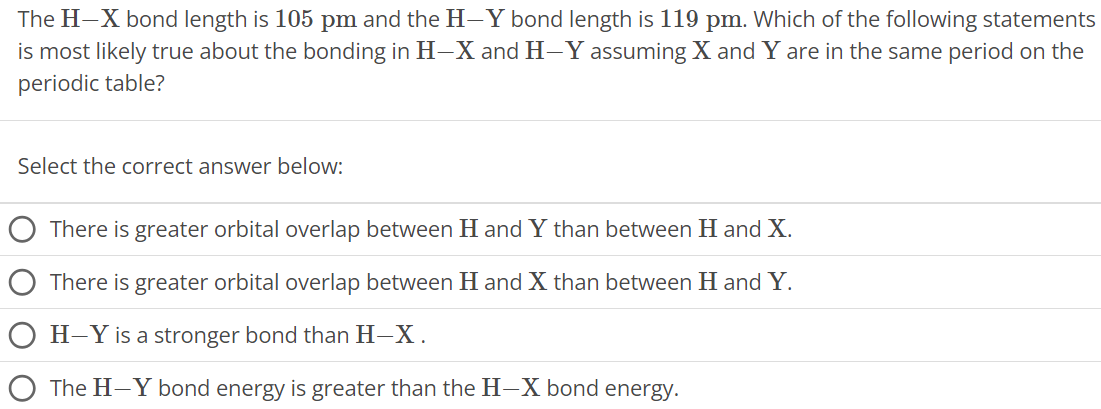The H−X bond length is 105 pm and the H−Y bond length is 119 pm. Which of the following statements is most likely true about the bonding in H−X and H−Y assuming X and Y are in the same period on the periodic table? Select the correct answer below: There is greater orbital overlap between H and Y than between H and X. There is greater orbital overlap between H and X than between H and Y. H−Y is a stronger bond than H−X. The H−Y bond energy is greater than the H−X bond energy.
